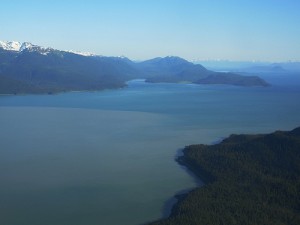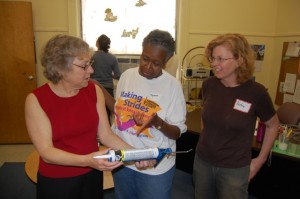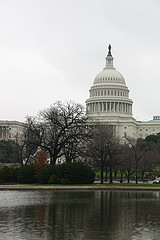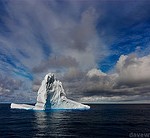
Wood Ant Hill
The current green revolution looks to renewable energy and green products to replace the polluting industries of the modern era. What is often left out of the discussion is our relationship with the living biosphere and how our technology much revolutionize itself to not just being low-carbon, but operate under the principles of how nature organizes itself. Janine Benyus, a scientist and founder of the company Biomimicry Guild, has been looking to nature to develop technologies that maximize efficiency prinicples inherent in the natural world. This new movement, labeled biomimicry, asks homo sapiens sapiens to tap into the intellengence of nature in our design principles. The natural world is not seen as a dumb organic machine, but rather a dynamic force that intelligently adapts to environmental changes to produce rhobust living ecosystems.
Humans are not the first and only species to be master builders, tool users, or farmers. For over 3.8 billion years, nature has evolved eligant solutions to some of the basic ecological challenges we are struggling with today. In the new online resource, www.asknature.org, it provides innovative minds with life’s best ideas to help develop sustainable technologies that are conductive to life. On this free open source website, one can research a design question and find a list of how nature solves the issue. For example, under the category of storing energy, there is a list of 33 species that adopt strategies to maximize energy use.
In the case of the wood ant, they build a nest with numerous holes for ventilation and entrances. At night and in cold weather the ants plug the holes to keep heat in. The workers also keep the slope of the nest at the right angle to obtain maximum amount of solar heat. The ants bring extra warmth into their nests as live heaters by basking in the sun in large numbers and taking the heat energy collected in their bodies into the nest. Can our homes be built in ways to maximize existing natural resources and store and cool the building without destroying our atmosphere? Passive solar design is one quick example of building techniques that blend old and new knowledge into our building design principles– with the potential of creating net zero energy use homes.
I believe this presents a paradigm shift for humanity, in which humans are not separate from the natural world but part of an intellegent ecosystem full of other species that have skills and wisdom to share with us. To learn more about Biomimicry I recommend watching a talk by Janine Benyus at http://www.ted.com/talks/janine_benyus_biomimicry_in_action.html.

 Today was a sad day for the environment, with reports released on the safety of our
Today was a sad day for the environment, with reports released on the safety of our  Army Corps of Engineers and the Supreme court has
Army Corps of Engineers and the Supreme court has  While climate change skeptics continue to derail needed climate policy and deepen the public’s confusion on accepted science, the planet is exhibiting more acute global warming symptoms. Recent observations are indicating that climate change is occurring at a faster pace and of a greater magnitude than predicted by IPCC models. Our Oceans are showing a decreased ability to absorb our excess carbon, leading to ocean acidification–
While climate change skeptics continue to derail needed climate policy and deepen the public’s confusion on accepted science, the planet is exhibiting more acute global warming symptoms. Recent observations are indicating that climate change is occurring at a faster pace and of a greater magnitude than predicted by IPCC models. Our Oceans are showing a decreased ability to absorb our excess carbon, leading to ocean acidification– 

 The controversial
The controversial 
 Remember back in 2007 when annual sea ice hit its lowest level ever recorded and declined at a rate far surpassing scientists worst predictions? Arctic sea ice during the 2007 melt season plummeted to the lowest levels since satellite measurements began in 1979. The average sea ice extent for September 2007 was 4.28 million square kilometers (1.65 million square miles), the lowest September on record, shattering the previous record for the month, set in 2005, by 23 percent.
Remember back in 2007 when annual sea ice hit its lowest level ever recorded and declined at a rate far surpassing scientists worst predictions? Arctic sea ice during the 2007 melt season plummeted to the lowest levels since satellite measurements began in 1979. The average sea ice extent for September 2007 was 4.28 million square kilometers (1.65 million square miles), the lowest September on record, shattering the previous record for the month, set in 2005, by 23 percent.